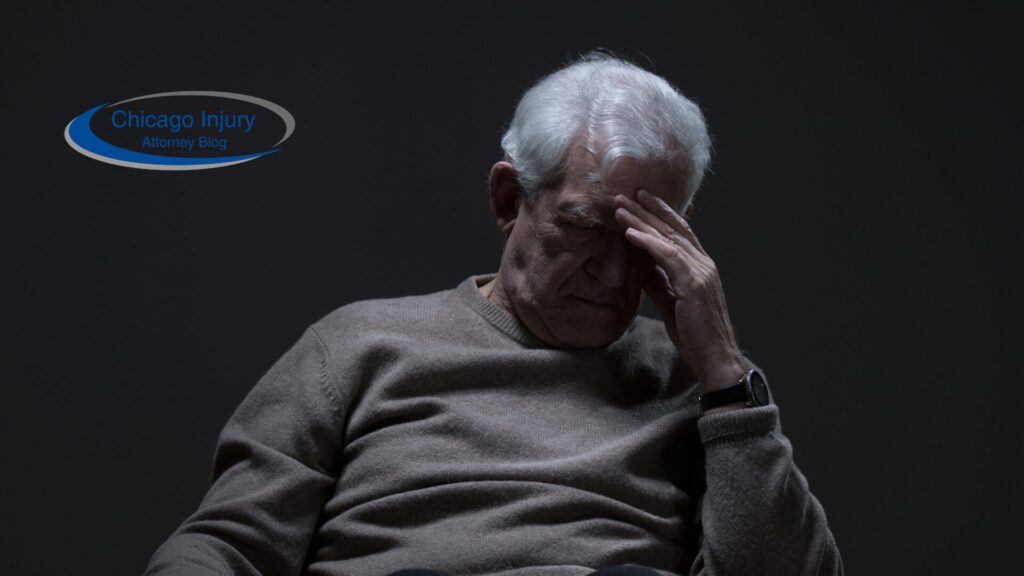The role of technology in detecting nursing home abuse has become increasingly vital in ensuring the safety and well-being of residents.
Advanced surveillance technologies play a crucial role in monitoring potential signs of abuse, such as unexplained injuries or behavioral changes, allowing for timely intervention to protect vulnerable individuals. These technologies can flag suspicious activities, providing valuable evidence to address and prevent further mistreatment.
The implementation of transparent reporting systems fosters a culture of accountability and oversight, holding staff members and facilities responsible for their actions. By embracing these technological solutions, nursing homes can create a safer environment for elderly residents, enhancing their quality of life and dignity.
Introduction to Nursing Home Abuse
Nursing home abuse encompasses various forms of mistreatment and neglect that elderly residents may experience in care facilities. It is essential to understand the prevalence of abuse, the vulnerabilities of residents, and the responsibilities of caregivers in preventing such incidents.
Financial exploitation is one common type of abuse where residents’ money or assets are stolen. Physical abuse, emotional abuse, neglect, and sexual abuse are other forms of mistreatment prevalent in nursing homes. These abuses can have devastating effects on residents, leading to physical injuries, psychological trauma, and a decline in overall well-being.
Caregivers play a crucial role in safeguarding residents from abuse by providing compassionate care, monitoring for signs of mistreatment, and promptly reporting any suspicions. To prevent nursing home abuse, facilities should have strict protocols, regular staff training, and thorough background checks for all employees.
Signs and Consequences of Nursing Home Abuse
Recognizing the signs and consequences of nursing home abuse is crucial in safeguarding the well-being of residents. From physical injuries to emotional distress, healthcare providers must maintain accurate health records to identify instances of abuse and neglect promptly.
Common signs of nursing home abuse include unexplained bruises, sudden changes in behavior, poor hygiene, and unattended medical needs. These signs often indicate underlying issues that can significantly impact residents’ health and quality of life.
When healthcare providers document and address abuse cases effectively, they play a vital role in ensuring the safety and dignity of residents. By advocating for their patients and taking appropriate action, healthcare professionals can help prevent further harm and provide necessary support to those affected by abuse in nursing homes.
The Importance of Surveillance Technologies
Surveillance technologies play a pivotal role in ensuring the safety and security of nursing home residents. From cameras to wearable devices, these monitoring systems enable continuous oversight and early detection of potential abuse incidents.
By implementing camera systems in common areas and resident rooms, caregivers can maintain a watchful eye on vulnerable individuals, ensuring prompt responses to emergencies.
Additionally, wearable devices equipped with GPS tracking and health monitoring features provide real-time data to staff, allowing for timely intervention in case of falls or health issues.
Integrating real-time monitoring solutions further enhances resident safety, as any unusual activities or deviations from normal routines can be immediately flagged for investigation, ultimately promoting a culture of accountability and transparency within the facility.
Emerging Surveillance Technologies in Elder Care
The landscape of elder care is evolving with the integration of advanced surveillance technologies and technology-based interventions designed to address the unique needs of the elderly population. Especially in the context of COVID-19, protocols for implementing these innovations have become paramount.
One of the key technological advancements in elder care surveillance is the utilization of smart sensors and monitoring systems that can track the wellness and activities of seniors, providing valuable insights to caregivers and healthcare providers. These systems can monitor vital signs, detect falls, and even remind individuals about medication schedules.
In response to the challenges posed by the pandemic, there has been a surge in the development and adoption of remote monitoring solutions, allowing for virtual check-ins and consultations. Such innovations not only enable better care management but also ensure the safety and well-being of the elderly amidst the restrictions imposed by COVID-19.
Wearable Devices for Real-Time Health Monitoring
Wearable devices have revolutionized real-time health monitoring in elder care settings, allowing for continuous tracking of vital signs and health metrics through integrated telemedicine platforms. These devices provide valuable data for healthcare providers and facilitate timely interventions.
The seamless integration of wearable devices with telemedicine platforms offers tremendous benefits in elder care by enabling remote monitoring and assessment of seniors’ health conditions. Along with real-time data collection, these devices contribute to the early detection of any abnormalities, allowing for prompt medical attention and prevention of potential health crises. Wearable devices play a crucial role in improving communication channels between caregivers and healthcare providers, promoting collaborative care efforts and enhancing the overall quality of care provided to elderly individuals.
Smart Room Systems for Behavior Analysis
Smart room systems offer innovative solutions for behavior analysis and monitoring in elder care facilities. By leveraging advanced technology, these systems enable staff to provide personalized healthcare services based on residents’ behavioral patterns, enhancing the overall quality of care.
These systems play a pivotal role in transforming traditional care practices into data-driven, proactive approaches.
By tracking movements, vitals, and interactions, staff can promptly address potential issues, leading to improved efficiency in monitoring residents and delivering timely care. The real-time data captured by smart room systems not only assists in predicting health conditions but also aids in creating tailored care plans that cater to individual needs. This proactive approach not only enhances the well-being and safety of residents but also reduces healthcare costs through early intervention.
Legal and Ethical Considerations
Navigating the legal and ethical landscape of surveillance technologies in nursing homes requires a careful balance between ensuring resident consent, addressing privacy concerns, implementing robust data protection measures, and safeguarding against cybersecurity threats.
Regarding consent protocols, healthcare providers must follow strict guidelines to ensure that residents understand and agree to the use of surveillance technologies. This can involve obtaining written consent or providing clear information about the purpose and scope of the monitoring.
Moreover, privacy safeguards are vital to prevent unauthorized access to sensitive data, requiring encrypted communication channels and restricted access permissions.
Data security practices include regular audits, secure storage, and encryption methods to protect the integrity and confidentiality of resident information.
Consent and Privacy Issues in Surveillance
Ensuring resident consent and addressing privacy issues are paramount when implementing surveillance technologies in nursing homes. Establishing clear protocols for obtaining consent, maintaining privacy standards, and respecting resident rights is essential for ethical surveillance practices.
As technology advances, there arises a delicate balance between ensuring safety and maintaining individual rights. The challenges around consent often stem from the intricate nature of surveillance technology, which can intrude upon personal privacy if not carefully managed. To tackle these complexities, institutions must prioritize transparency, informing residents about the purpose and extent of surveillance. Emphasizing the concept of informed consent becomes imperative to uphold ethical standards and safeguard the dignity of residents.
Data Protection and Cybersecurity Measures
Implementing robust data protection and cybersecurity measures is critical in safeguarding sensitive information collected through surveillance technologies in nursing homes.
By prioritizing data security and continually monitoring for potential threats, these facilities can ensure the integrity of their surveillance systems. Advanced encryption techniques should be employed to secure the data in transit and at rest, while access controls must be implemented to restrict unauthorized entry into the system.
Regular data backups are essential to prevent data loss due to system failures or cyber-attacks. Conducting security audits and vulnerability assessments on a routine basis can help identify and address any weaknesses in the existing security protocols.
Staff Training and Protocol Enhancement
Empowering staff through comprehensive training programs and protocol enhancements is pivotal in strengthening abuse prevention efforts within nursing home facilities.
These training programs play a crucial role in educating staff about recognizing signs of abuse, effective communication strategies, and appropriate intervention techniques. By establishing clear protocols for reporting any suspicious activities or concerns, facilities create a structured approach towards addressing potential issues promptly and effectively.
Implementing robust reporting systems further reinforces adherence to established protocols and fosters a culture of transparency and accountability among staff members. Regular training sessions and protocol reviews not only enhance staff competencies but also serve as a reminder of the facility’s commitment to maintaining a safe and respectful environment for residents.
Integrating Technology into Abuse Prevention Training
Integrating technology into abuse prevention training programs can enhance the effectiveness of staff education and improve response mechanisms in identifying and addressing potential abuse cases. By incorporating technological tools and protocols, facilities can give the power to caregivers to mitigate risks and promote resident safety.
One key benefit of utilizing technology-driven education in abuse prevention training is the ability to provide interactive and engaging learning experiences. Through immersive simulations and scenario-based training modules, staff members can develop practical skills and knowledge to handle complex situations effectively.
Technology allows for real-time tracking and monitoring of staff progress, enabling supervisors to identify areas for improvement and tailor training programs accordingly. This proactive approach ensures that caregivers are well-equipped to respond swiftly and decisively when faced with potential abuse incidents.
Developing Protocols for Surveillance-Evidence Handling
Developing comprehensive protocols for surveillance-evidence handling is essential to ensure proper management of data and information collected through monitoring systems. By establishing clear guidelines for evidence preservation and monitoring procedures, facilities can uphold the integrity of surveillance data.
Effective protocols not only help in preserving the authenticity and admissibility of evidence but also play a crucial role in maintaining chain of custody, ensuring data security, and safeguarding against tampering or data breaches. Best practices include documentation of all activities, regular audits to identify vulnerabilities, and adherence to legal and regulatory requirements. Continuous monitoring and regular review of protocols are imperative to adapt to evolving threats and technological advancements in surveillance systems. A structured approach to evidence handling instills trust in the accuracy and reliability of data captured, enhancing the overall effectiveness of surveillance operations.
Family Involvement and Transparency
Family involvement and transparent communication are essential components of promoting accountability and trust within nursing home settings. By providing families with communication tools and robust reporting systems, facilities can enhance transparency, address concerns promptly, and foster a collaborative approach to resident care.
Effective communication tools, such as real-time updates on residents’ well-being and access to care plans, enable families to stay informed and actively participate in decision-making processes.
Transparent reporting systems help identify potential issues, including instances of abuse, ensuring immediate intervention and protection of residents.
Through this open dialogue and accountability, nursing homes can cultivate a culture of trust, where families feel give the power toed to advocate for their loved ones’ rights and well-being.
Communication Tools for Family Peace of Mind
Implementing effective communication tools for families can provide peace of mind and reassurance regarding the well-being of their loved ones in nursing home facilities. By enabling real-time updates, secure messaging, and virtual interactions, facilities can bridge the gap between families and caregivers.
The use of secure messaging platforms allows families to connect securely with healthcare providers, facilitating easy sharing of important information and updates.
Virtual interactions such as video calls provide a personal touch, enabling families to see their loved ones and engage in meaningful conversations even when physical visits may not be possible.
Real-time updates keep families informed about their loved one’s health status and care plans, fostering trust and transparency in the caregiving process.
Reporting Systems for Abuse and Transparency
Establishing robust reporting systems for abuse incidents and promoting transparency in data monitoring are critical steps in ensuring accountability and resident safety within nursing home environments.
Transparency in reporting helps create an environment where incidents can be addressed effectively while also preventing future occurrences of abuse.
When data on incidents is consistently monitored, patterns and trends can be identified, leading to improved prevention strategies and interventions.
Proper management of health records plays a vital role in advocating for resident rights and ensuring that individuals receive dignified care.
Impact Assessment and Future Directions
Conducting thorough impact assessments of surveillance technologies in abuse prevention is essential for evaluating their effectiveness and identifying areas for improvement.
It is crucial to delve into the realm of impact evaluation to gauge how these technologies are truly contributing to the safety and security of vulnerable populations, such as residents in nursing homes. By understanding the intricate nuances of these assessments, stakeholders can make informed decisions on optimizing the use of surveillance tools, thereby improving overall quality of care.
Staying abreast of the latest trends in surveillance technology allows for the integration of cutting-edge solutions that enhance monitoring capabilities and responsiveness to potential risks.
Evaluating the Effectiveness of Surveillance in Abuse Prevention
Evaluating the effectiveness of surveillance technologies in abuse prevention is crucial for determining their impact on resident safety and well-being. By measuring the efficacy of interventions and monitoring systems, facilities can enhance their abuse prevention strategies and optimize resident care.
One of the key aspects of evaluating surveillance technologies in the context of abuse prevention is the utilization of impact assessment methodologies. These methodologies help in gauging the real-world outcomes and effects of the surveillance systems on preventing abuse incidents. Through rigorous evaluation processes, such as pre-post assessments and comparison studies, facilities can gather data to analyze the effectiveness of their implemented surveillance measures.
Intervention outcomes play a significant role in the evaluation process. Assessing the responses and effectiveness of preventive interventions implemented based on surveillance data is essential for refining and tailoring abuse prevention strategies. Regularly reviewing the outcomes of interventions allows facilities to identify areas for improvement and strengthen their overall abuse prevention protocols.
To optimize surveillance technologies for abuse prevention, facilities can explore strategies such as enhancing data analysis capabilities, integrating machine learning algorithms for predictive analytics, and regular maintenance and updates of surveillance systems. By staying informed about the latest advancements in surveillance technology and adapting them to meet specific abuse prevention needs, facilities can bolster their overall efforts in ensuring resident safety and well-being.
Innovations and Future Trends in Nursing Home Surveillance
Exploring innovations and future trends in nursing home surveillance can provide valuable insights into the evolving landscape of elder care technology. From enhanced protocols to cutting-edge monitoring systems, staying abreast of innovations can drive continuous improvements in resident safety and abuse prevention.
One of the key advancements in nursing home surveillance is the integration of artificial intelligence (AI) and machine learning algorithms, enabling real-time data analysis and early detection of potential risks. These technologies not only enhance monitoring capabilities but also support personalized care plans tailored to individual resident needs. The development of innovative sensor technologies and wearable devices allows for remote health monitoring, promoting proactive healthcare interventions and ensuring timely medical assistance for elderly residents.
Frequently Asked Questions
1. What is the role of technology in detecting nursing home abuse?
Technology plays a crucial role in detecting nursing home abuse by providing evidence and identifying potential signs of abuse. This includes security cameras, electronic monitoring, and specialized software.
2. How can security cameras help in detecting nursing home abuse?
Security cameras can capture footage of abuse, providing concrete evidence for legal action. They can also act as a deterrent for potential abusers, promoting better care for residents.
3. Are there any limitations to using technology for detecting nursing home abuse?
While technology can be a valuable tool, it should not replace human observation and intervention. Additionally, there may be privacy concerns and ethical considerations when implementing certain technologies in nursing homes.
4. Can electronic monitoring be used to prevent nursing home abuse?
Electronic monitoring, such as motion sensors and bed alarms, can help prevent abuse by alerting staff to potential issues and monitoring resident movements. However, it should not be solely relied upon for preventing abuse.
5. What role does specialized software play in detecting nursing home abuse?
Specialized software can analyze resident data and identify patterns or irregularities that may indicate abuse. This can include changes in behavior, medication administration, and care documentation.
6. How can technology help in detecting nursing home abuse, and to report and address it?
Technology can streamline the reporting process by documenting and organizing evidence. It can also help facilitate communication between staff, residents, and their families, leading to faster and more effective resolution of abuse cases.





